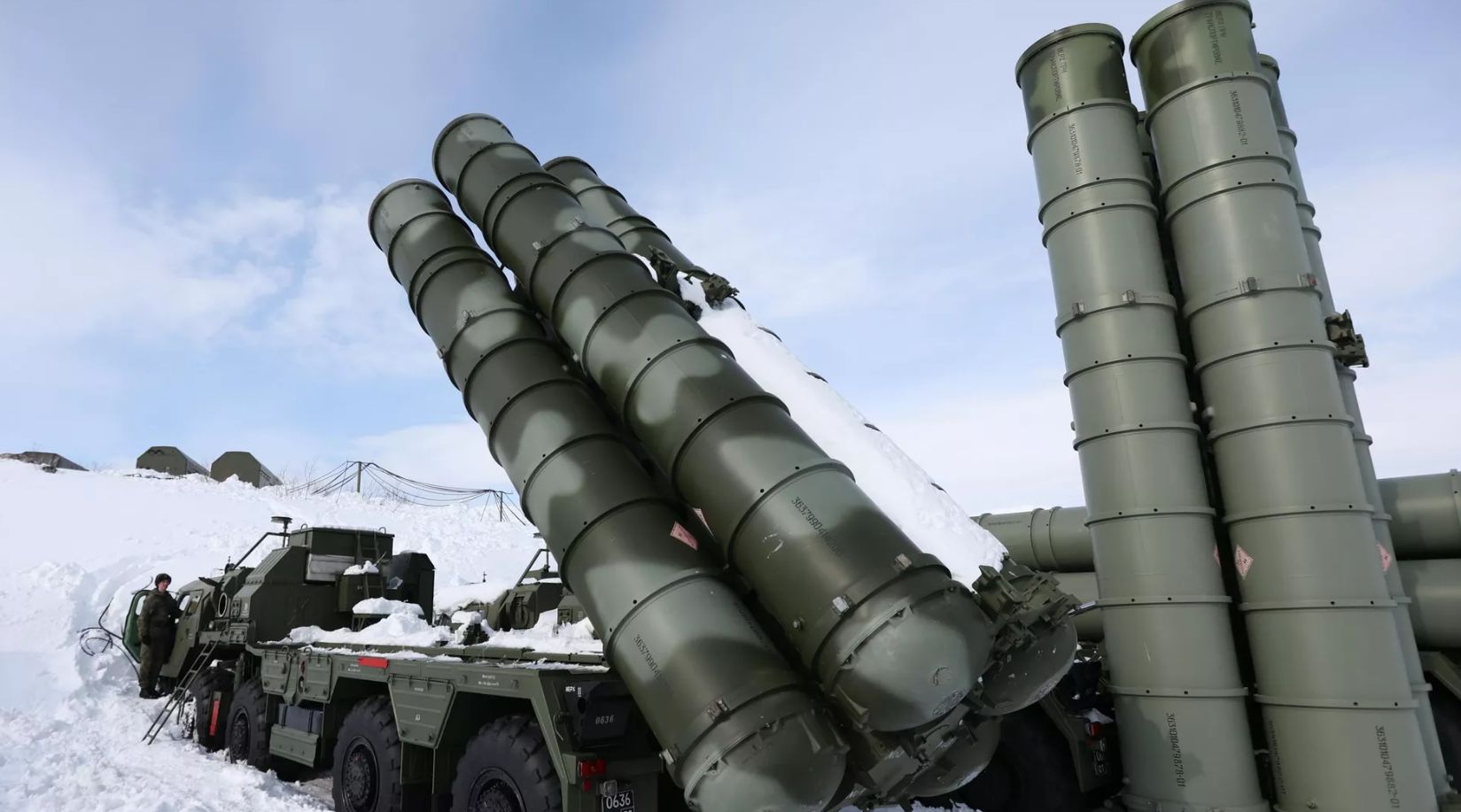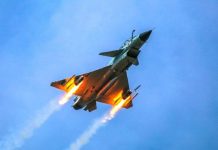After keeping it under wraps for some time now, considering the sensitivities of the US, India has boldly wielded its S-400 ‘Sudarshan’ air defense system on the eastern border in an expansive wargame called ‘Poorvi Akash’ (Eastern Skies). This is the first time the IAF deployed the system in an exercise.
India’s Iskander Missile Analogue With ‘Hard To Kill’ Quasi-Ballistic Trajectory – Pralay – Awaits Adversaries
The Russian-made missile system has been anointed after the celestial weapon belonging to Lord Krishna, often considered the director of the epic war of Mahabharat.
India signed the US $ 5.5 billion deal for the S-400s (NATO name SA-21 ‘Growler’) in 2018 despite reservations from the West, asserting the surface-to-air missile was needed to counter the threat from China. The country received its first system in December 2021, just two months before Russia invaded Ukraine and the ensuing sanctions.
Unlike the induction of Rafale fanfare that happened amidst much fanfare and complete media glare, the S-400 induction has been a hush-hush affair. India and Russia only announced the beginning of the delivery of the SAM system
There were murmurs about India possibly facing a range of financial sanctions from the US under the Countering America’s Adversaries through Sanctions Act (CAATSA), which names Russia as an adversary alongside North Korea and Iran for its actions against Ukraine, interference in the US 2016 elections and support to Syria.
The threat of sanctions against India was real, as the US imposed sanctions against NATO ally Turkey for purchasing the Russian S-400 missiles. Also, Turkey was shunted out of the F-35 stealth jet development program.
S-400 is made by Russia’s state-owned arms manufacturer Almaz-Antey, which had been targeted by EU and US sanctions over the Kremlin’s actions in Ukraine.
The ‘Triumf’ interceptor-based missile system can destroy incoming hostile aircraft, missiles, and even drones at ranges of up to 400 km. And despite being in service for nearly two years, neither the Indian Air Force nor the Indian government openly spoke about the missiles.
It is only with the 2023 edition of the Akash-Poorvi exercise, which the IAF is conducting in the eastern sector in conjunction with the Indian Army, that the Indian dispensation is openly acknowledging the addition of the potent missile system to its inventory.
The war games were carried out by the Eastern Air Command (EAC), codenamed ‘Poorvi Akash,’ from October 30 to November 4. The major exercise showcased the operational readiness capabilities of the Indian Air Force and the Eastern Air Command in particular.
IAF Chief Air Chief Marshal VR Choudhary also visited forward areas, including Mechuka, Pasighat, Tuting, and Ziro, in Arunachal Pradesh, a state coveted by China. During the visits, he was also briefed about the operational deployment of the IAF in Exercise Poorvi Akash.
The Eastern Air Command (EAC) is one of the sword arms of the IAF responsible for defending the skies over a vast area of over three lakh square kilometers spread across 12 states, including the seven states of North-East India.
The Indian news agency ANI quoted defense officials saying: “The IAF exercise had operations by major platforms including the S-400 air defense missile systems, the Rafale and Tejas fighter jets along with the Prachand light combat helicopters in the northeastern region.”
The objective of ‘Exercise Poorvi Akash’ was to apply air power to both defensive and offensive operations and reactions to various perceived threats and was conducted day and night. The activation of the entire Eastern sector of the IAF, along with the Indian Army, comes at a time when India’s relationship with China has hit an all-time low.
How India Escaped US Sanctions
The Biden administration representatives have been unequivocal about voicing their discouragement about India purchasing the Russian weapon system. However, the reality check of India’s importance in keeping China in check and the importance of S-400 in achieving the goal has been behind the tempering down of the US reaction.
India has escaped sanctions from the West for its closeness to Russia, as the US termed it the “lynchpin” of its Indo-Pacific policy to counter the rise of China. The US has also seemed to be recognizing that India’s relationship with Russia has historically followed a very different course to that of the West. I
India’s ties with Russia had “developed over decades, at a time when the United States was not able to be a partner to India.”
Many in the US Congress echoed India’s position that the purchase was needed to counter the threat of China. James O’Brien, nominated by President Biden to oversee sanctions policy at the State Department, said in his confirmation hearing that the United States was discouraging the purchase but that any prospect of penalizing India would have to be weighed against the “important geostrategic considerations, particularly with the relationship to China.”
India, in turn, maintained that it follows an independent foreign policy.
O’Brien, Biden’s nominee for the US State Department’s coordinator for sanctions policy, when asked during his confirmation hearing if he could draw a parallel between the two cases of India and Turkey, said it was difficult to compare the two situations as one was a NATO ally breaking with legacy defense procurement systems and then there was India that has legacy ties with Russia.
US Republican senator Todd Young, who batted for granting CAATSA waiver to India, contended: “India is a vital ally in our competition against China, and thus, I believe we should resist taking any actions that might drive them away from us and the Quad. I am therefore strongly supportive of waiving CAATSA sanctions against India, given our shared foreign policy interests.”
S-400 – India’s ‘Sudarshan Chakra’
The S-400 ‘Triumf’ is a mobile, surface-to-air missile system (SAM) designed by Russia. It is capable of engaging aircraft, UAVs, and cruise missiles and has a terminal ballistic missile defense capability. The system can simultaneously engage 36 targets.

It represents the fourth generation of long-range Russian SAMs and the successor to the S-200 and S-300. The S-400’s mission set and capabilities are roughly comparable to the US Patriot system and are twice as cheap.
While US fifth-generation fighter jets, such as the F-35 and its variants, have been designed with the S-400’s capabilities in mind, older US warplanes like the F-16 and F/A-18E/F Super Hornet would struggle to slip through the system’s net.
According to Russia, this missile can destroy and detect targets flying as low as 100 feet to as high as 40,000 feet. The entire system can be readied to fire within a few minutes.
The missiles and launchers are mounted on cross-country trucks. The IAF has already operationalized three of its S-400 air defense missile squadrons along borders with China and Pakistan.
According to multiple Indian military experts quoted by EurAsian Times, the S400s would expose the limitation of China’s J-20 fighters, and PLAAF would be wary of operating its stealth jets anywhere close to Russian-origin missiles.
- Ritu Sharma has been a journalist for over a decade, writing on defense, foreign affairs, and nuclear technology. Article Republished
- She can be reached at ritu.sharma (at) mail.com
- Follow EurAsian Times on Google News




